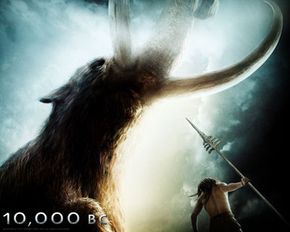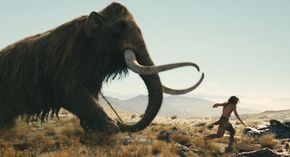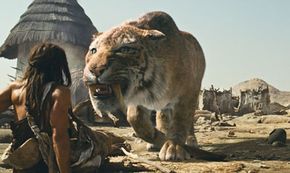After staging an alien invasion in "Independence Day," freezing New York with a modern ice age in "The Day After Tomorrow" and terrorizing it in "Godzilla," director Roland Emmerich has turned his attention to the prehistoric past for his latest cinematic spectacle -- and it was truly a mammoth undertaking. "10,000 BC" brings extinct saber-tooth tigers, woolly mammoths and ferocious "terror birds" to life with cutting-edge computer graphics. Creating these creatures posed significant challenges for the filmmakers, who also contended with fickle weather conditions on location in Africa and New Zealand.
The film, co-written by Emmerich and Harald Kloser, tells the story of D'Leh (Steven Strait), a young mammoth hunter who leads a small army in pursuit of the slave raiders who have kidnapped members of his tribe -- including the woman he loves, Evolet (Camilla Belle). The quest leads him into battle with a powerful, technically advanced civilization.
Advertisement
Emmerich based this fictional culture on the ancient Egyptians -- who don't appear in actual history until about seven centuries later. The idea came from a theory that the Egyptian pyramids were actually built by a much earlier lost civilization. "That gave us the possibility to encompass many thousands of years of human civilization, from hunter-gatherers to the first pyramid builders," Emmerich says.
The initial inspiration for the film was a documentary on mammoth hunters -- but Emmerich, daunted by the prospect of creating herds of longhaired pachyderms, tabled the idea. But in 2001, the shaggy creature Sulley in "Monsters Inc." convinced him that computer software had improved enough for "10,000 BC" to start taking shape. But it was a long road to make it a reality -- and creating mammoths was no simple task, as we'll find out.
Advertisement



